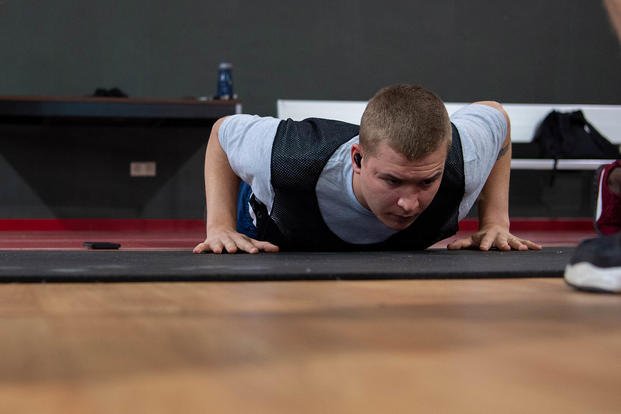Many people who start working out to get to the training by passing fitness tests tend to do a series of random workouts or perhaps the same workout over and over -- even on consecutive days. You may find intermittent workouts that lack specifics to your future fitness test not that helpful if you are pushing your limits to max the test or barely pass.
Recently, the article on the PT Testing Progression (Five-Part Series) was written to offer options to prepare for the next fitness test. Arranging this five-part series can be confusing, as many people like either to pick one workout from the five and do it every other day.
This is certainly a way to do it, but a different choreography of the exercises may help you break new boundaries on fitness tests.
Here is the classic week of PT training:
Day 1 (Monday): PT Pyramid -- For more than 30 years, this has been my go-to workout to improve on PT scores. Add a quarter-mile, half-mile or mile every five sets of the pyramid, and you have a perfect program to build your muscle stamina and endurance for acing fitness tests. But you also need a variety, so mix in the following the rest of the week. *
Day 2 (Tuesday): Run, leg PT, focus on your goal mile pace for intervals. For instance:
Repeat 8-10 times
- 400-meter runs at goal mile pace
- Walk 1-2 minutes between sets.
Goal pace means to run these quarter-mile distances at the same pace you want for your timed run. If you want to run 1.5 miles in nine minutes, you need to run 400 meters in 90 seconds. You also can make these sets 800 meters for 4-5 sets at three minutes if a six-minute mile pace is your goal.
Day 3 (Wednesday): PT Super Sets -- This is another sub-max effort foundation workout to increase the volume of your PT exercises. This workout can match your volume of PT that you did in the pyramid but with higher-repetition sets. Typically, these rep counts are 25%-50% of your current PT scores and shoot for 5-10 sets. Add in a 200- to 400-meter run every round to get used to running after PT tests. This helps to train for the training. PFT Transition.*
Day 4 (Thursday): Run/sprint intervals -- Warm up with easy cardio options for 5-10 minutes, then start adding sprints, hill runs and other full-speed intervals to push your perceived limits. Tabata intervals (20-second sprint/10 seconds easy for five-minute sets), one minute fast/one minute easy, 400-meter sprint/100-meter walk for 20-30 minutes is a good way to push your heart, lungs and legs.
Day 5 (Friday or Saturday): Max Rep Set Workouts -- These are by far the toughest and are more designed to push exceeding the competitive standards. Depending on how you feel after Day 1 and Day 3, you may want another day of recovery before the max-rep set workout. Many who are stuck at 15 pull-ups/80 push-ups/80 sit-ups and are striving for 20+/100+/100+ can see big gains with this routine once a week.*
Day 6 (Friday or Saturday): Cardio or Recovery Day -- Today can be steady cardio (run, swim, ruck or other) and a goal pace running workout or take a recovery day and do some non-impact recovery options. You can place this day as Day 5 if you feel you need another day to recover for max-rep efforts testing the following day.
This is how we arrange several different workout programs and recovery ideas into a week to best help people pursue their next level on PT tests. Whether it is your first time passing a fitness test or acing it to compete for special ops programs, this scalable week can help you grow in PT scores to reach any goal you have.
*You also can add a weight vest of 10-20 pounds if these workouts get too easy for you. Or wear a weight vest for a portion of any of these workouts for more of a challenge.
Notice there are no daily push-ups, pull-ups, sit-ups or doing weights one day, followed by the same muscle group with calisthenics the next. When doing this type of calisthenics volume, you need a day off to rest that muscle group, but you still need to train on something else the days in between.
Stew Smith is a former Navy SEAL and fitness author certified as a Strength and Conditioning Specialist (CSCS) with the National Strength and Conditioning Association. Visit his Fitness eBook store if you’re looking to start a workout program to create a healthy lifestyle. Send your fitness questions to stew@stewsmith.com.
Want to Learn More About Military Life?
Whether you're thinking of joining the military, looking for fitness and basic training tips, or keeping up with military life and benefits, Military.com has you covered. Subscribe to Military.com to have military news, updates and resources delivered directly to your inbox.



















